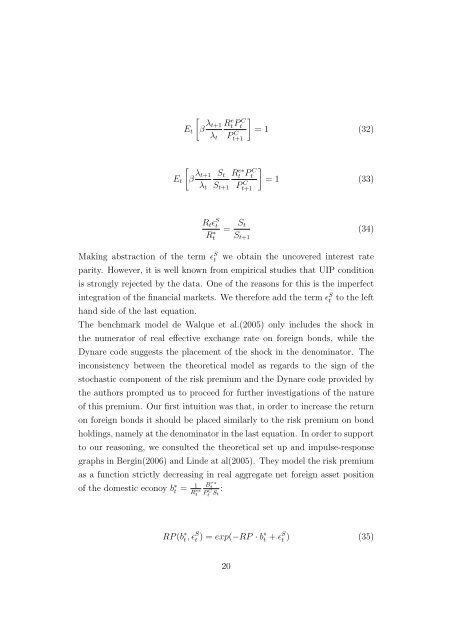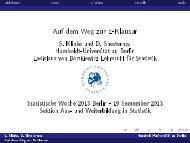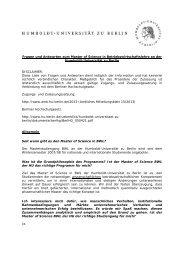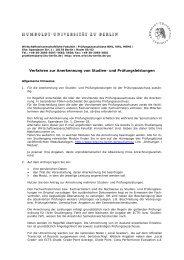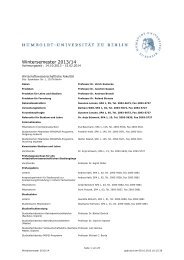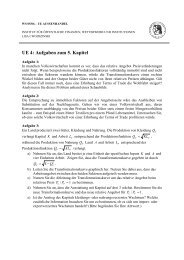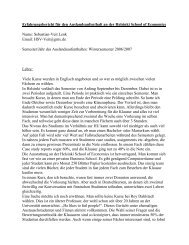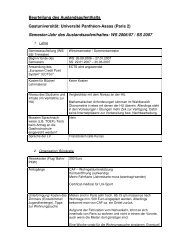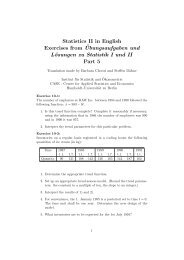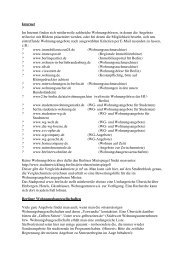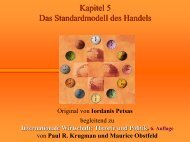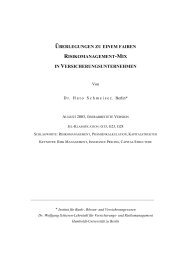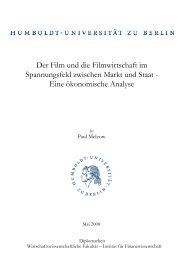Master Thesis - Humboldt-Universität zu Berlin
Master Thesis - Humboldt-Universität zu Berlin
Master Thesis - Humboldt-Universität zu Berlin
Create successful ePaper yourself
Turn your PDF publications into a flip-book with our unique Google optimized e-Paper software.
E t<br />
[<br />
β λ t+1<br />
λ t<br />
]<br />
RtP e t<br />
C<br />
= 1 (32)<br />
Pt+1<br />
C<br />
E t<br />
[<br />
β λ t+1<br />
λ t<br />
S t<br />
S t+1<br />
R e∗<br />
t Pt<br />
C<br />
Pt+1<br />
C<br />
]<br />
= 1 (33)<br />
R t ɛ S t<br />
R ∗ t<br />
= S t<br />
S t+1<br />
(34)<br />
Making abstraction of the term ɛ S t we obtain the uncovered interest rate<br />
parity. However, it is well known from empirical studies that UIP condition<br />
is strongly rejected by the data. One of the reasons for this is the imperfect<br />
integration of the financial markets. We therefore add the term ɛ S t to the left<br />
hand side of the last equation.<br />
The benchmark model de Walque et al.(2005) only includes the shock in<br />
the numerator of real effective exchange rate on foreign bonds, while the<br />
Dynare code suggests the placement of the shock in the denominator. The<br />
inconsistency between the theoretical model as regards to the sign of the<br />
stochastic component of the risk premium and the Dynare code provided by<br />
the authors prompted us to proceed for further investigations of the nature<br />
of this premium. Our first intuition was that, in order to increase the return<br />
on foreign bonds it should be placed similarly to the risk premium on bond<br />
holdings, namely at the denominator in the last equation. In order to support<br />
to our reasoning, we consulted the theoretical set up and impulse-response<br />
graphs in Bergin(2006) and Linde at al(2005). They model the risk premium<br />
as a function strictly decreasing in real aggregate net foreign asset position<br />
of the domestic econoy b ∗ t = 1<br />
R e∗<br />
t<br />
B τ∗<br />
t<br />
P C t St :<br />
RP (b ∗ t , ɛ S t ) = exp(−RP · b ∗ t + ɛ S t ) (35)<br />
20


